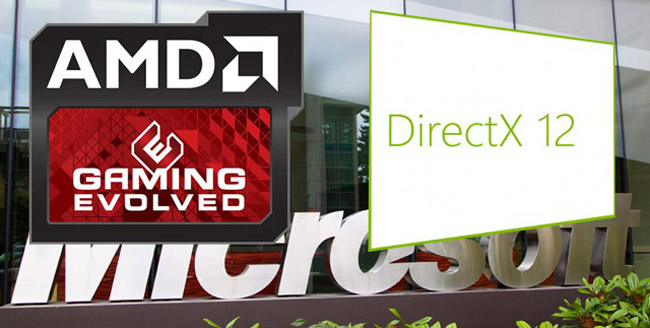Modern PC gaming has been built on the back of Microsoft’s on-going DirectX initiative, so where will AMD’s focus be as we move into a post-Mantle-launch world.
“AMD is focused on DX right now”, said Byrne explained.
“Mantle is a disruptor”, he said. “It’s a differentiator and it allows developers to pick up huge improvements in performance using existing hardware”.
So is there a genuine/practical application?
“AMD is in the fortunate place right now of working closely with Mantle and DirectX – allowing us to recommend and support both APIs and encouraging developers to use the right tools for the right job”, Byrne told us.
“Generally Mantle shows the world that things can be different. It gets people thinking”, he said. “Starting with Battlefield 4 and Thief, which also includes AMD’s TrueAudio technology”.
“We are working hard to get to the new AMD”, said Byrne. “New hardware, new software, new bundles, multiple boards all working together in harmony. It’s going to be a very different experience”.
If you search for public statements that today's Intel graphics specialists were making around 3 years ago, you'll find something like “DirectX unfortunately tends to rob you of quite a lot of the performance, and most importantly it robs you of the opportunity to innovate”.
While there's no way that you would get anyone from AMD or Microsoft to comment on the situation, there's a strong feeling in the market that AMD created Mantle and then Microsoft brought it in-house as the basis of its thinking for DX12. Given AMD/ATi's long history of working closely with the Microsoft console team, it's easy to see how this might be true. Hardware and driver engineers, working around a deliberately limited platform, would look for every means possible to extract additional performance. Seems logical that Mantle would come from that knowledge base and that, once it had been shown to Microsoft, they would jump on the chance to improve the overall performance of their core OS. We'll mark that down as a definite possibility.
Leading takes different thinking and, again, you have to say that Mantle certainly is different.
 KitGuru KitGuru.net – Tech News | Hardware News | Hardware Reviews | IOS | Mobile | Gaming | Graphics Cards
KitGuru KitGuru.net – Tech News | Hardware News | Hardware Reviews | IOS | Mobile | Gaming | Graphics Cards





I’m happy that AMD is making a recovery and I wish it good luck, but it’s a pity that desktop enthusiasts don’t see to be part of the roadmap.
AMD get a lot of stick in the CPU sector, but they offer a lot for budget users. I am sure they will get high end processors out again in 2015 to target intel.
Their GPU’s are very strong this year and have caused nvidia some serious embarassment. TITAN Z for instance? it was delayed after they saw the performance of the R9 295X2.
Heres to the future !
R9 295X2 has been the best video card release ever IMO. I can’t afford one, but the value is actually very strong and the performance at Ultra HD 4K is incredible. First watercooled reference card ever 🙂 CPU’s – been a while since I have owned AMD – Intel are just so far ahead. I think AMD did well from console sales on Xbox one and PS4. must have made them billions already.
AMD totally lost the CPU wars, and the gpu war is also on a loosing side. Although 295×2 is a monstrous gpu, it is far too expensive for most people, only enthusiasts with really deep pockets can get one (or more). From my point of view, a PC enthusiast with a relatively small budget, AMD has basically nothing to offer. Intel cpus trample amds to death, and for the same price, an Nvidia gpu will be overall better performance wise. Console-wise speaking, yeah, they kind of won, but that is not enough to keep them afloat… Let us hope they will have something better to offer in the period to come.
@Wolf…
” Although 295×2 is a monstrous gpu, it is far too expensive for most people, only enthusiasts with really deep pockets can get one (or more). ”
Hmmm… and nVidia’s Titan Z at $3000 is what, somehow a better deal?
295X ATE nVidia’s lunch. So much that nVidia canceled the release.
Alexander Wolheart: Master of the Non-Sequitor.
@ CSO John Byrne
If you atre reading this then when is AMD gong to release multi socket Kaveri?
Twin or Quad APU’s would be a real monster both in Compute performance and graphics.